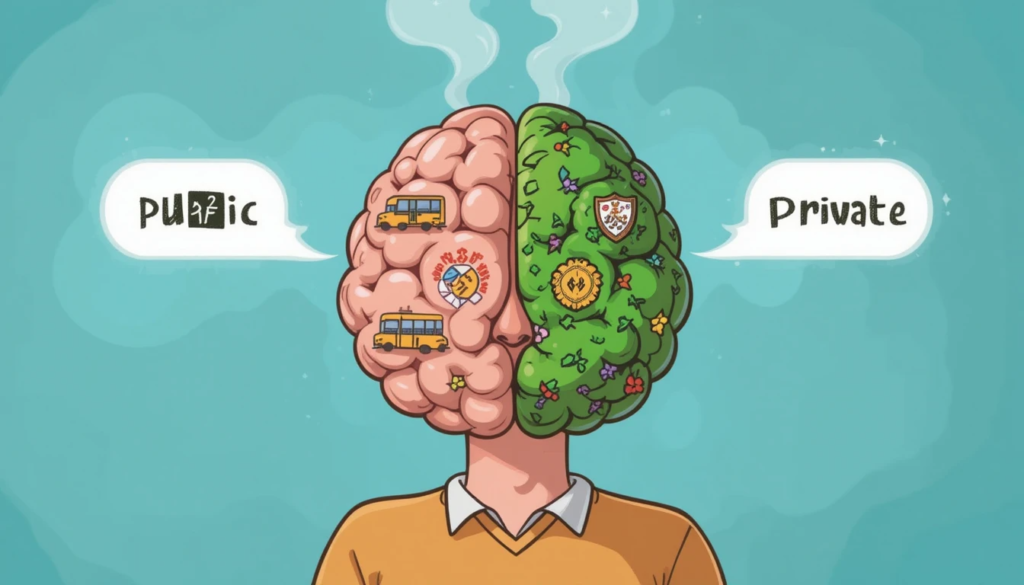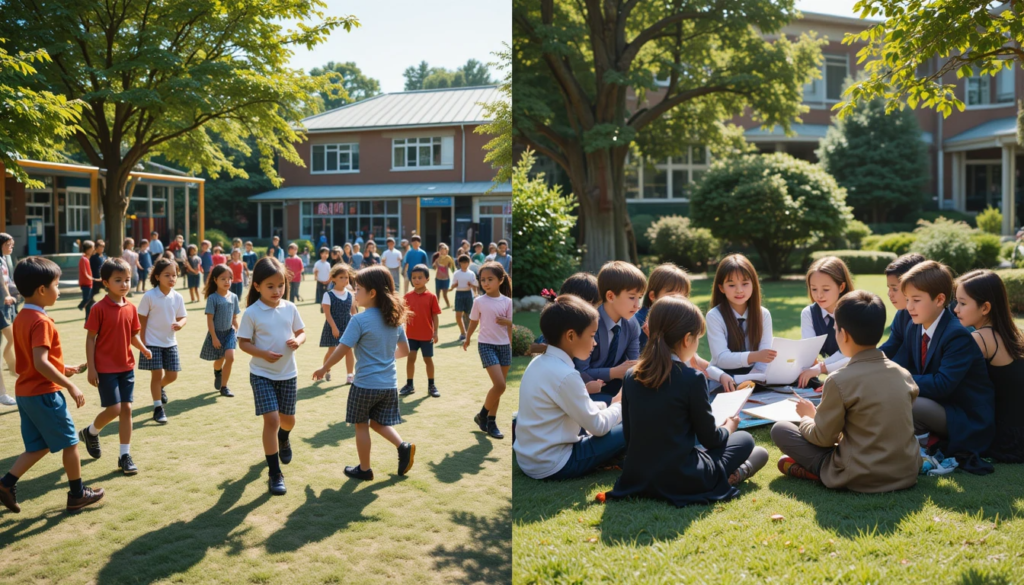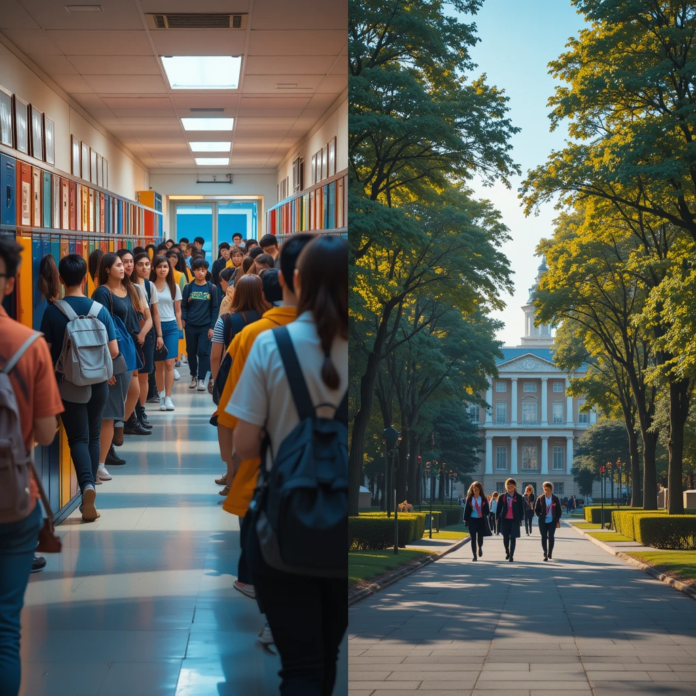Private vs. public schools? Yo, that debate had me spinning as a clueless parent. Here I am in my Denver kitchen, 04:27 PM IST September 2, 2025—wait, that’s India time, my bad, it’s 06:57 AM MDT September 2, 2025, with the coffee brewing and the faint smell of burnt toast from my morning fail still lingering. Back when I started, I thought private was fancy and public was fine, but my first school tour? Tripped over a locker, spilled coffee on a pamphlet—total disaster. Like, seriously? I’d tell myself I’d pick the best, then second-guess everything, contradicting my “I know this” vibe. Private vs. public schools became my headache, but man, I flopped hard before figuring it out. Hard, yo.
One time, I visited a public school, forgot my kid’s name tag—yep, awkward moment—and the principal smirked. The room smelled like chalk dust and nerves, my face red as I fumbled through it. Big wake-up call. Started digging into private vs. public schools, but I thought it’d be a quick choice—boy, was I wrong. It worked, even if I still mess up sometimes. Mess up, ugh. relentless societal chatter about “the best education.” And that’s when the deep dive began into school choice.

Why Private vs. Public Schools Matters (Even with My Blunders)
School choices are wild, and without sorting private vs. public schools, I was toast. Picked the wrong open house once, showed up late—oops. Sitting here, coffee gurgling, faint paper rustle from my research pile, I can say this decision shaped us. Thought I could just flip a coin—big nope. I’m better now, but real talk, I still stress over it. Stress, yeah, the worst.
Here’s why it’s a big deal, from my flops:
- Fits their needs: No more mismatched vibes.
- Saves my sanity: Even if I mess up the visit.
- Sets their path: Saw progress with the right pick. Pick, sorta.
If you’re a parent like me, American and overthinking, private vs. public schools is your puzzle. Don’t expect to nail it—I’m still learning. Still learning, man.
Pros of Private vs. Public Schools That Caught My Eye (And My Epic Fails)
Here’s the good stuff—pros of private vs. public schools that stood out, jotted from my Denver mess with a creaky chair and a pamphlet stack my kid doodled on. Some I loved, others I botched, ‘cause I’m human, right? Linking legit sources for cred—check https://www.edweek.org for real insights. Real stuff, yo.
Cool Pros of Private vs. Public Schools: Where I Started (And Stumbled)
- Smaller Classes (Private) – Loved the focus, but got lost on tour—oops. Found my way, kid thrives. (https://www.edweek.org/leadership/)
- More Resources (Private) – Impressed by tech, tripped over a cord—cringe. Adjusted, awesome tools. (https://www.npr.org/sections/ed/)
- Community Vibe (Public) – Felt the warmth, forgot the date once—panic. Rechecked, solid support. (https://www.greatschools.org/) Support, yeah.
Deep Pros of Private vs. Public Schools: My Half-Wins
- Tailored Learning (Private) – Worked for my kid, zoned out mid-meeting—yikes. Focused, great fit. (https://www.privateschoolreview.com/)
- Diverse Kids (Public) – Loved the mix, argued with a parent once—ugh. Sorted it, good exposure. (https://www.publicschoolreview.com/)
- Free Access (Public) – Saved cash, misread a form—oops. Fixed it, big relief. (https://www.ed.gov/) Relief, kinda.

Cons of Private vs. Public Schools That Tripped Me Up
Rough Cons of Private vs. Public Schools: Where I Stumbled
- High Costs (Private) – Price freaked me, spilled coffee on the bill—embarrassing. Managed it, though.
- Less Diversity (Private) – Noticed it, debated with my spouse—oops. Learned, it’s a trade-off.
- Crowding (Public) – Felt it, lost my kid once—ugh. Found ‘em, added caution.
Chair’s squeaking, pamphlets are falling—ugh. This private vs. public schools thing? Some pros rocked, cons tripped me like a parent rookie. No shame, just me being me. Me, the chaos mom.
Tips to Pick Private vs. Public Schools (Even with My Mess-Ups)
Here’s how I tackled private vs. public schools, from my kitchen wreck. Bombed a school chat once, room smelling like my nervous sweat. Start with visits—tried rushing, got lost. Check sites like EdWeek for tips, even if I skimmed one. (https://www.edweek.org) Take notes—I scribbled on napkins, lost ‘em, so embarrassing. Breaks help—I skipped ‘em, zoned out mid-tour. Zoned out, yeah.
Biggest fail? Overanalyzing. Thought I needed every detail, stressed out. Private vs. public schools need gut too, man. Also, chill vibes—coffee’s nice, but I spilled it on a form once, total disaster. Disaster, yo.
Wrapping Up My Rant on Private vs. Public Schools
Spilling this about private vs. public schools feels like venting over burgers with a pal—just me, creaky chair, Denver breeze outside. This choice kept me from parenting meltdown, but it showed I’m a mess—spills, zones, all of it. I love the idea of the perfect school but still fumble, contradicting my own hype. It made deciding doable for a goof like me. Try it, yeah? Drop a comment with your school pick wins or flops—I wanna hear your chaos. Or share what worked. Wait, did I say that twice? Whatever, brain’s fried. Might’ve repeated myself, or maybe I meant to. Private vs. public schools, it’s a trip, but I’m still figuring it out. Prolly forgot something.
For an interesting read on school funding disparities: Why School Funding Matters (and How It Affects Your Kid’s Education)
And for a relatable laugh about daily parenting struggles: 15 Hilarious Tweets About Parenting That Will Make You Feel Seen




